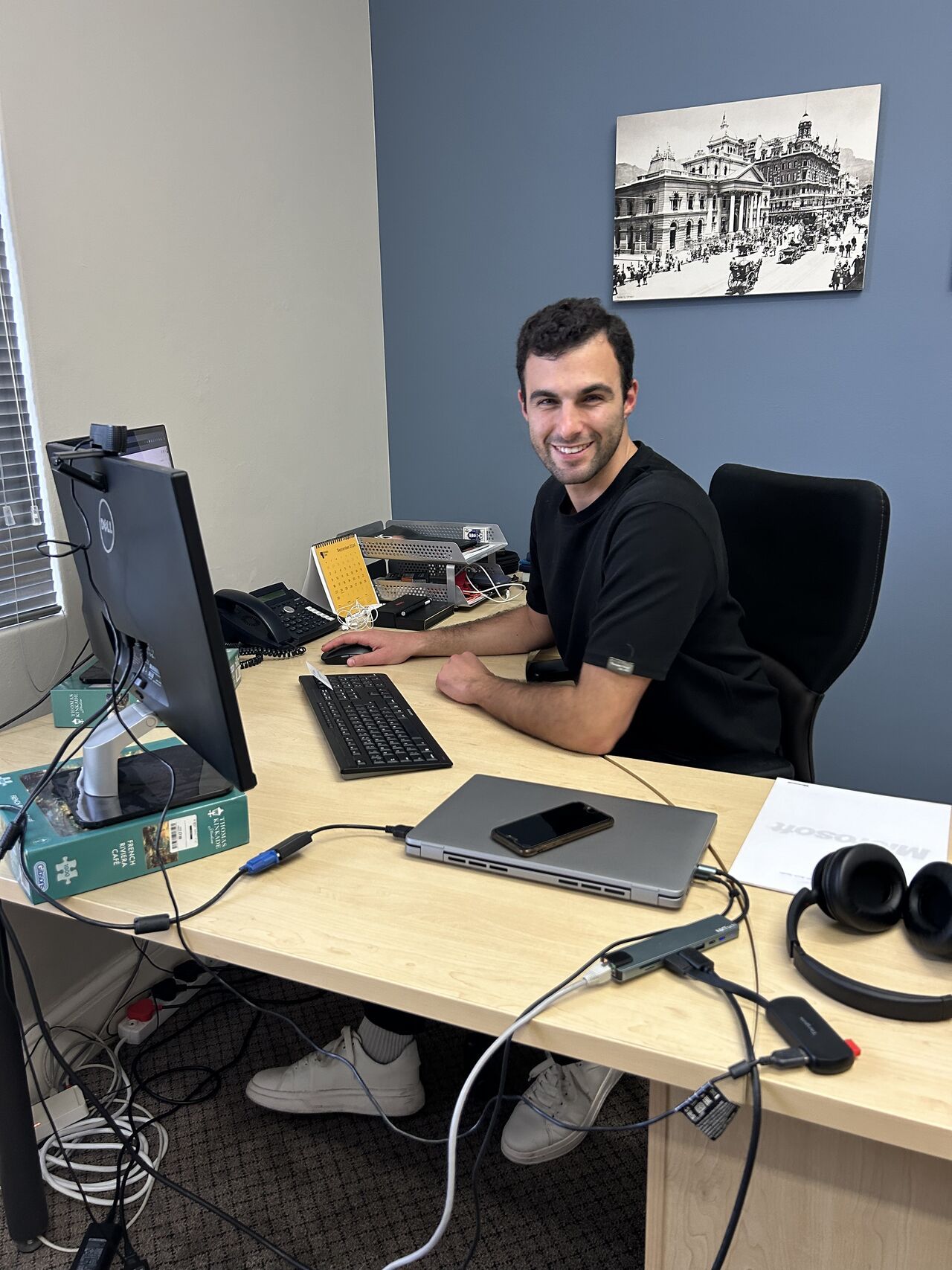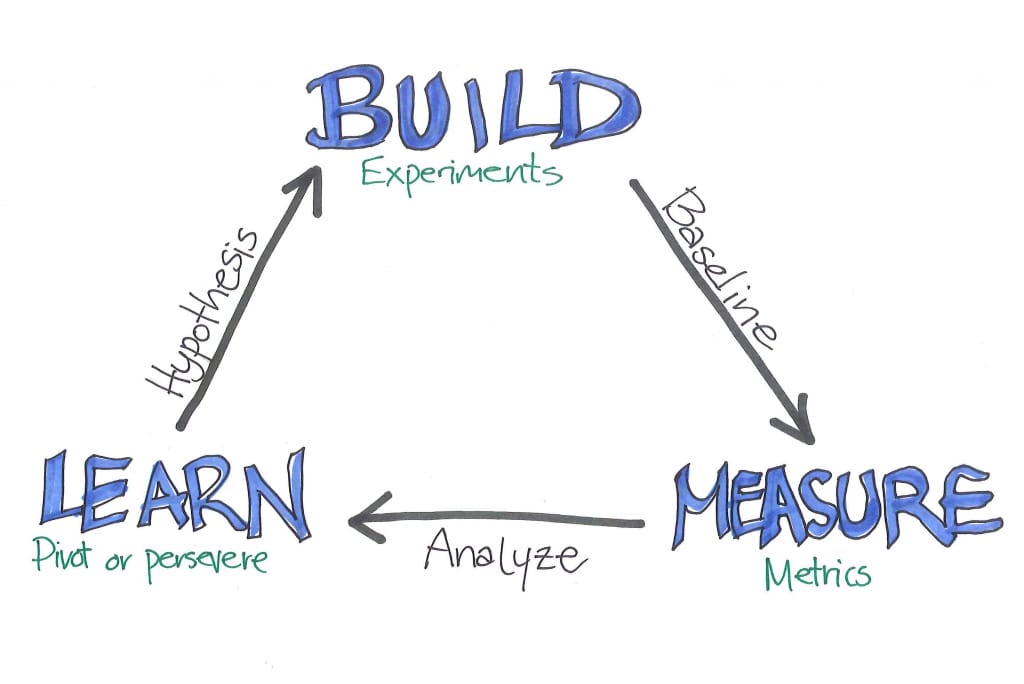- Stocks To Space by Luca Bersella
- Posts
- Why I stopped writing
Why I stopped writing
And why I'm back...

Hey everyone,
An EXTRA special welcome to the +675 new readers who joined since I last published!

I’m back writing after a 3-month-long summer (or winter, depending on where you are in the world) hiatus from Stocks To Space.
The last time I published here, I profiled Richard Branson. Although it’s one of my top performing posts, I’m not particularly proud of it.
I realised I was spending more time writing about other successful builders rather than writing my own story.
I've spent the last 3 months doing exactly that.
And I’m here to tell you all about it.
(Re-)intro

First day of work at BRWM
Whether you've been here for the past year and a half or you're completely brand new to the publication, I thought I'd reintroduce myself.
My name is Luca Bersella. 👋
I’m the CEO of BRWM, a 36-year-old financial advice firm in Cape Town, South Africa.
I'm currently leading the digital transformation of the company, moving from an analogue financial advice firm to a tech-led, AI-enabled, yet unmistakably personal firm built for the future.
Where I’ve been
Back in July this year, I completely reset.
I had just returned from global investment conferences in the UK and needed some time to reflect after shelving the investment app project I had been trying to incubate within BRWM.
I wrote about this experience here.
Besides pitching the idea incessantly, I even created a fully functional waitlist website with a custom referral system.
(Yes, I vibe coded it — sue me.)

wegent.ai
I parked that idea because it never really fit within BRWM's existing business.
I was trying to create an AI investment app in a financial advice context. It didn’t make sense.
What I realised after months of trying to get it off the ground and speaking with the biggest investment houses in South Africa is that the app market is saturated.
(Seems obvious but I had to learn it the hard way.)
Everyone's got their own strategy for an app, and it's nothing new.
Around the same time, I saw a Y Combinator video about “full-stack” AI companies. I wrote about these here.
What makes these companies different is that, instead of selling software to big corporations, like most startups do, they build a professional services firm around AI agents and compete directly with incumbents.
That was my light bulb moment. I was sitting on this exact opportunity at BRWM.
So I spent the better part of July planning the foundation to turn my vision into reality.
I knew vibe coding the MVP over a weekend wouldn’t cut it this time.
I learned the primitives of development in an AI-native setting using tools like Claude Code, v0 and Cursor because I had to. I'm primarily non-technical by profession and I’m a solo builder in the business (at the moment).
I was forced to embrace AI and treat it as a digital dev, not a fun toy.
While planning, it occurred to me that if I were going to transform BRWM into a full-stack AI services firm, I would have to build a functional, enterprise-grade platform that is secure, private, and built around AI.
The key line in the sand being not to add AI as a bolt-on solution, but to build on these emergent systems from the ground up.
The other glaringly obvious fact to me was that a solution like this isn’t vibe-coded. This is not a prototype that could break in production or leak customer data.

When I say I spent a whole month planning, it probably sounds like procrastination, but really, what I was doing was building a rich knowledge base of context that my AI agents could use to develop the system correctly from the get-go.
And, to the previous point, it was crucial to put security and privacy at the forefront of the build, not treat them as afterthoughts.
Naturally, things evolve during development—you always figure out new and interesting ways to fit the pieces of your product together every single day.
But I knew that the initial context and the initial idea for the system architecture had to be locked in from day one, rather than me blindly building again and expecting a different outcome.
This build was NEVER going to be a one-prompt wonder.
I mapped out the entire system—from the CRM layer to the custom client portal, automation layers, AI agent layer, and data infrastructure—and created thousands of lines of markdown context.
The technical documentation produced from my conversations with Claude was honestly a saving grace. They gave the AI agents EVERYTHING to build what I wanted, and to do it the right way.
I could then focus on my strengths in design, UI/UX, testing, and getting things into production as safely and quickly as possible.
The first thing I've built is our marketing website with a complete brand identity designed from the ground up, as well as an interactive retirement calculator.
This all began as a website in the front and a lead magnet in the back. As I built and that overall vision came to life, I realised this was certainly more than a static marketing asset. This was the front door to our entire system. It would serve as the entry point for new prospects into our firm's digital platform.
And so this small incremental release has done way more to solidify my vision than if I were still sitting, planning it all out.
Steve Jobs has a wonderful quote that sums up my experience of building this product over the past few months.

Created with GPT-5
“It’s delusional to think that a really great idea is 90% of the work.
Designing a product is keeping 5,000 things in your brain, continuing to fit them together in new and different ways to get what you want.
Every day you discover something new—a new problem or a new opportunity to fit these things together a little differently.
And it's that process that is the magic.”
What I learned
I learned a tonne over the past few months.
From taking an app idea from zero to one, to how to execute and actually get it into production.
I'll keep it to 3 high-level insights that I feel are super important to cover.
Silence creates focus

Over the past week, I've reintroduced myself on LinkedIn and am launching a larger content push to establish my personal brand, get back out there, and market the application I've built. (Basically what I'm doing right here, right now.)
I was flirting with starting to post much earlier this year, but I stayed silent until now because I needed the focus time to sit down, let all these ideas crystallise, and build.
Because of the focus time, I'm now in a position where my vision is crystal clear AND the MVP is in production.
This allowed me to get back out there in a productive way. I've been having some amazing conversations with people, getting early user feedback that's been super valuable for making targeted adjustments to the app UI/UX, and even testing the core positioning and vision.
Now is the time for creating content. It just feels right this time.
This is something I've struggled with in the past. I've been through other build cycles where you have that extreme level of excitement as you're building the product.
But as soon as you've finished the MVP and it's time to market it, that's when all the excitement fades away because that's when it all becomes real.
Ultimately, that is the moment that your resolve will be tested to actually launch, to actually get the idea out there, and to risk people laughing at it.
AI has changed the game…
…and is continuing to change it.

These tools are currently rewriting how humans work. Nobody is ready for what’s coming. But it’s probably not going to happen as we think it is.
Something really interesting I learned through this process— and something I'm still trying to figure out in my head —is the human’s position in the near future. I’ll explain through an anecdote.
Obviously these AI tools and coding agents worked like a charm. I was able to go from 0 to 1 and push a full-stack application into production in 6 weeks, thanks to them. Bear in mind I can’t code to save my life.
But it was a really weird experience when getting into the nitty-gritties of the backend—technical choices, atomic lines of code, orchestrating AI models, or building an event-based architecture within the application.
It very quickly dawned on me that, if we're talking about a purely digital product or application perspective, my core competency lies more on the design and product side. I'm never going to be a good (let alone great) software dev or back-end engineer, and that's okay.
As a human, I can't do everything, but I can be a generalist across all of these things. AI allows me to go from zero to one. Even a year ago, I’d still be sitting in purgatory at the ideation phase.
But the AI models are in this interesting place where they can do a TONNE and make humans go further than they’ve ever previously gone.
But they’re also really dumb in certain situations, can take shortcuts that compromise security and can’t really do real things in the world like humans can.
As Andrej Karpathy described them recently, “they’re like these digital ghosts that can’t remember anything from the previous conversation stuck within your laptop.”
It was this insight that reaffirmed my number one priority going into 2026: to find a technical (human) co-founder to build my vision with me.
When I was younger, I used to think I could do everything myself. But I now know I could go 1000x faster with a technical lead building our AI systems.
Yes, Y Combinator is looking for solo founders to build a $1 billion startup solo, but I feel like that's more an AI-hype narrative than actual substance at the moment, given where these tools are in reality.
Incremental releases > Big launch

Lean Startup Method
As I've said, I've launched our publicly-facing website and our retirement calculator. This is v0.1 and is nowhere near its final form.
I'm taking the Lean Startup approach to launching MVPs and experiments in the firm’s new direction—focusing on gathering market feedback and incorporating that into the build rather than long, drawn-out release cycles.
Speed matters, and I need to prioritise it over perfection.
I also know that real user testing driving feedback is better than hypothetical feedback or what I think is best, because ultimately I have to stand the test of the market.
The initial feedback has been really positive, especially regarding the retirement calculator tool, which is pretty novel in its own right.
As an aside, I have a funny feeling that I'm going to have to aggressively dogfood this product quite a bit to my target ICP, as I don't anticipate this demographic (relatively high net worth individuals in their 40s to 60s) will necessarily go out of their way looking for a tool like this.
But damn, it’s useful —we’d take hours to do for clients what this tool does in sub-2 minutes.
I'll definitely be sharing my best growth practices and what I learn as I try to get this calculator out into the market over the next quarter.
What’s next
So that's where I've been and what I've learned over the past 3 months.
From here on, my commitment to you all is to resume publishing as much as possible. I'm not going to be as hard on myself as I have been before for not publishing every week, because I want to make sure I'm coming to you with content that's actually valuable. I’m done rushing out blog posts for the sake of a weekly streak.
My aim is to document the transformation of BRWM from a traditional financial advice firm into a full-stack AI professional services firm that is ultimately still unmistakably human but runs way more efficiently and can scale to as many people as possible.
Roughly, you'll see about 40% AI trends, 40% BRWM build, and 20% wealth insights.
I spend some of my time as a financial advisor (when I’m not vibing with AI), and that's been pretty interesting.
I'm really excited about this next phase in the journey. And I want to invite you all (the builders, the founders, curious technical minds, and people interested in the practical applications of AI in real business) to participate —not just be spectators—engage with me, challenge me, and contribute.
After spending 3 months in the trenches, I've got a product to show for it, and I'm seeing the launch through for the first time in my life.
My silence is over for now; it's time to build.
Speak to you next Friday,
— Luca
P.S. Although it's in a South African context, I'd love your feedback on the product.
What did you think of today's edition?(Let me know how I can improve) |
HOW I CAN HELP 🤞
P.S. Want to work together?
Get your free AI audit: If you’re still manually doing work that AI could handle in minutes, I'll show you exactly where you're bleeding time and money. In 25 minutes, I'll audit your current workflow and map out your personalized AI transformation roadmap. This is the same process I used to save 15+ hours per week in my own business. 🤖
See my complete tool stack: Beyond what I've shared in my AI operating system, I maintain a living document of every AI tool I test, why I use it, and which ones actually move the needle. Access my complete AI toolkit by reaching out here. 💼
That’s it from me. See you next week, Luca 👋
Reply